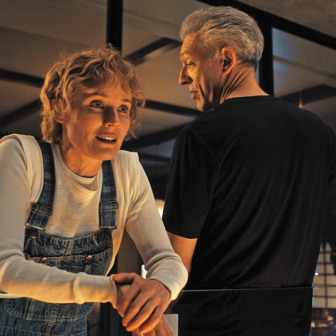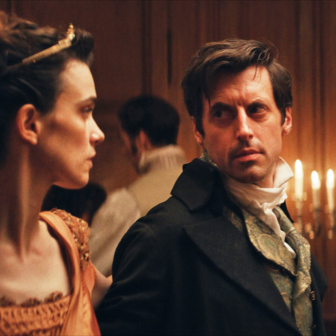It takes some nerve for a reviewer to describe a film as “perfect.” In the case of Celine Song’s Past Lives, however, I’m prepared to take the risk. What does it mean thus to describe it? Perhaps it is a matter of responding moment by moment to what we’re being shown without being distracted by issues of, say, technique. I’m not the only viewer struck in this way: audiences at the Sundance Film Festival rated it highly, and elsewhere it is a possible candidate for the best film of the year.
All right, enough gush; what is going on here? Like last month’s Driving Madeleine but even more so, Past Lives has little to do with the conventions of, say, classic Hollywood cinema, in which an orchestrated collection of cause-and-effect-related events lead to a gratifying closure, whether of crime resolved or romance clinched. Instead, it calls on viewers’ powers of observation, their openness to the circumstances that create relationships and can interrupt them, and shows how, despite separation, the main characters retain — and wish to retain — indelible memories of what that past meant and how the present might deal with it.
Celine Song, director and screenwriter of this South Korean/US production, has also had a career as a playwright, and the film’s meaning is conveyed for much of its length by the placement of its key figures and what their faces reveal. But the film is not the least stagey and never becomes a talkfest, opting instead for a quiet realism.
Song was born in South Korea and moved to Ontario with her parents when she was twelve. The only point of mentioning that biographical detail is that she seems to have drawn on aspects of her own background when planning Past Lives, her first feature, which uses both English and Korean dialogue.
Two youngsters at school in South Korea share a bond of serious affection, which is made clear very early when the boy, Hae Sung (Seung Min Yim), tries to comfort the girl, Na Young (Seung Ah Moon), as he tells her he has outdone her in an exam she had set her mind on. She is somewhat solemn, but there is a clear sense that they really matter to each other.
When her parents decide to emigrate — like Song’s, though in this case to New York — Na’s mother shows her understanding of the kids’ wish to go on a date when she explains that “if you leave something behind, you gain something too.” In their last moments together in Seoul we see Hae Sung looking bleak as Na talks of departing. They walk together until their homeward paths diverge, and there is nothing sentimental in this touching image.
Twelve years later, when they are both twenty-four-year-olds and their lives have necessarily taken different turns — his including a stint in the Korean army, hers as a writer in the United States — they make contact via social media. What will be crucial to their relationship and to the film’s concern with their lives, and indeed with life itself, is what happens when, a further twelve years later, Hae Sung (now played by Teo Yoo) flies into New York.
Na has now become Nora (Greta Lee), and the two of them spend time together, walking the streets and on a ferry with the Statue of Liberty in the background, before they fetch up at Nora’s apartment. He has had a failed relationship and she is married to Arthur (John Magaro), a likable Jewish man, also a writer, who greets Hae Sung with quiet affability.
This meeting is clearly not going to be a matter of wild pyrotechnics, but rather of three decent people pondering the past. Sitting in a bar with Arthur listening silently, Nora and Hae Sung come to terms in Korean with their meeting’s impact on their present lives. The scene recalls the image with which the film opens: Song seems to have sought to frame the film in a way that suggests its most important preoccupation is with how time can bear on a relationship without ever quite expelling what made it so potent and long-lasting.
In her treatment of such thematic concerns, Song never resorts to triangular romantic tensions or any other kind of melodramatic narrative predictabilities. Odd memory flashes recall something from the years between, but their purpose is essentially to capture a moment that has stayed in the characters’ minds rather than to advance the plot. What is most striking is the extent to which Song relies on her characters’ facial expressions.
Past Lives also makes eloquent use of moments of silence, allowing time for the protagonists (and the viewer) to reflect upon the turn these lives have taken. This technique is especially potent near the film’s end, when Nora (now absorbed into her American life) accompanies Hae Sung to find a cab, and when a moving and complex moment of silence leads to an embrace, the meaning of which is not spelt out.
The point about communication is subtly underlined when Nora first takes Hae Sung home to meet Arthur. As she talks to her husband in English and then passes on their remarks to Hae Sung in Korean, and vice versa, the film makes clear that the action will proceed with as little hurt as possible to any of the three. And in creating these characters Song has secured performances as near to perfection as one might imagine.
In fact, “performances” suggests a degree of artifice at odds with the sense of three people who seem to be living rather than acting. •




